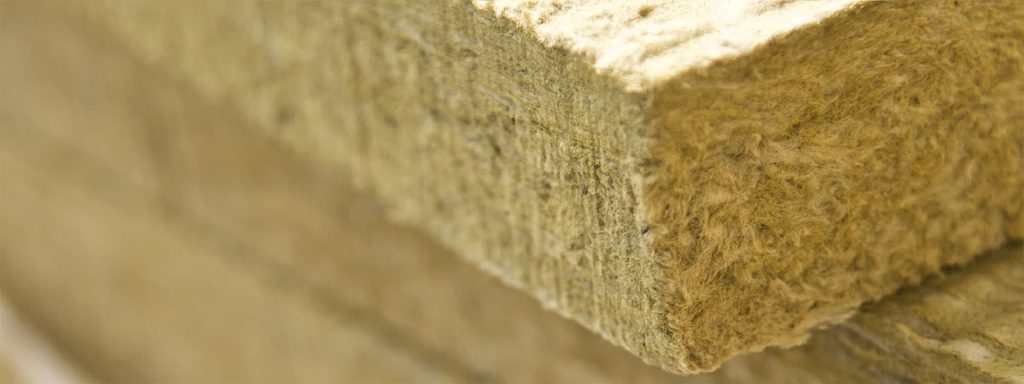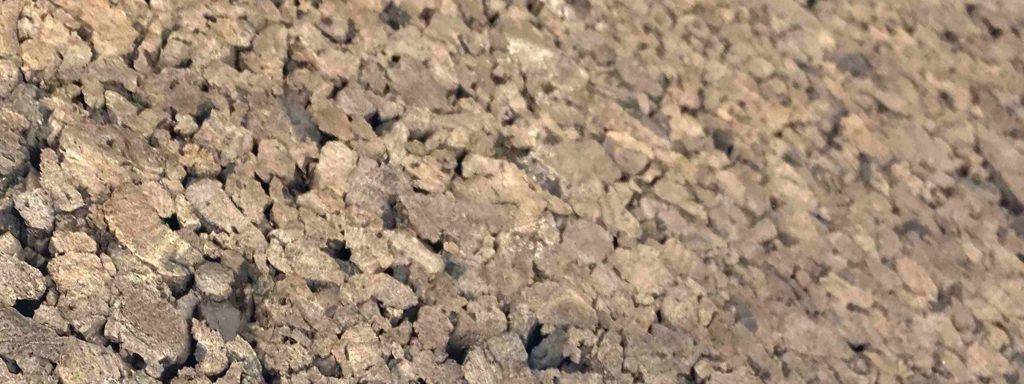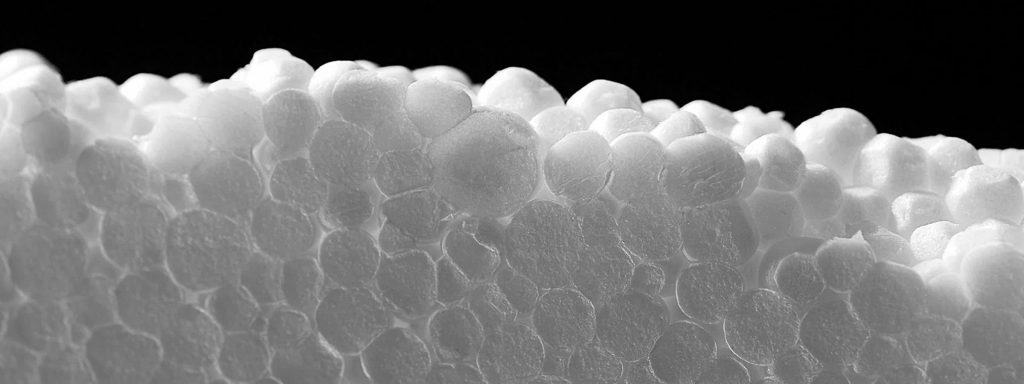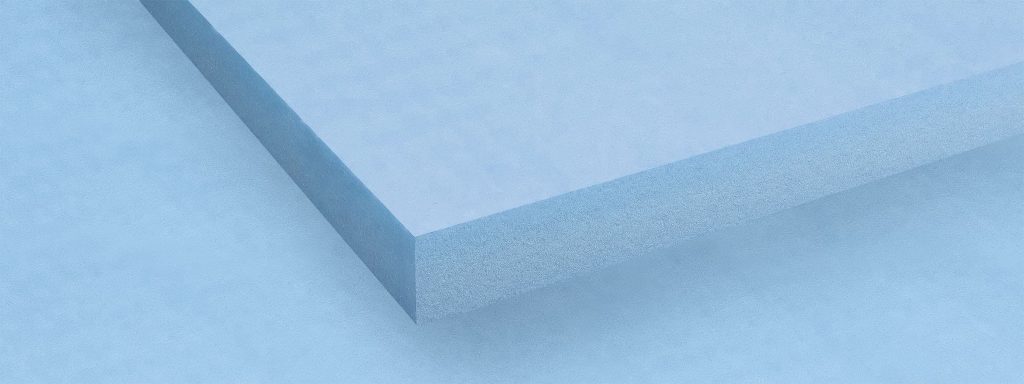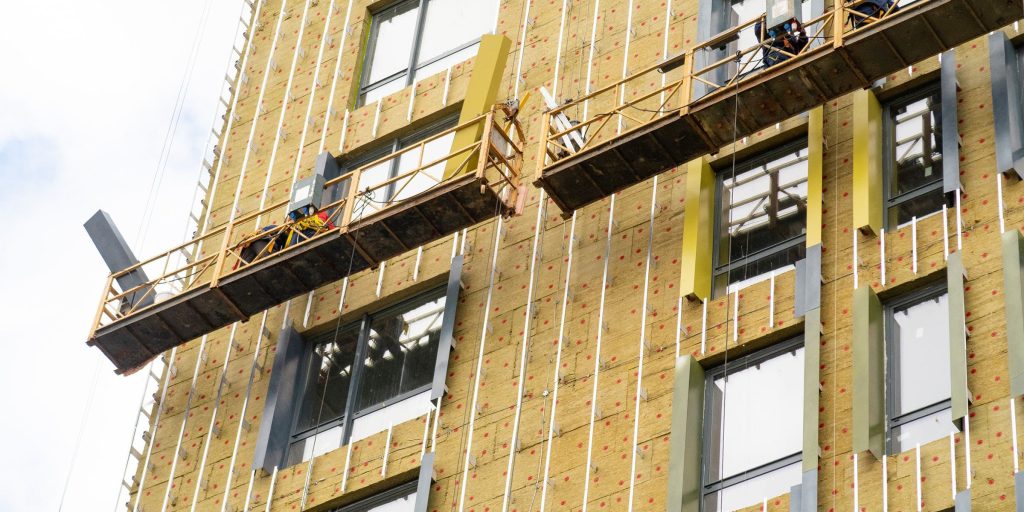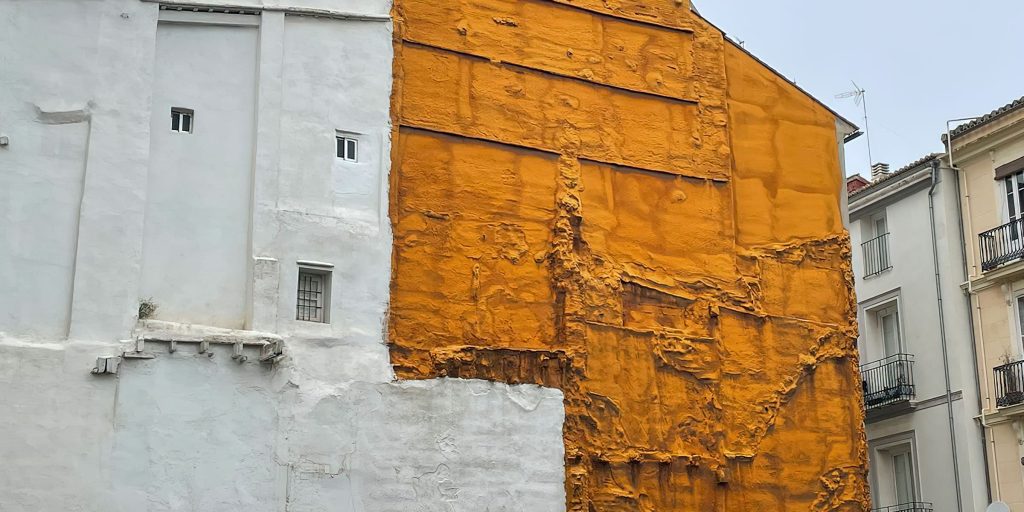Thermal insulation in facades has an important role to play in ensuring comfort and convenience in a building. For this reason, this solution is characterised by its efficiency in the enclosure, being one of the most widely used sustainable options in building renovation.
In this post, we offer you all the details about this trend that is so popular in today’s market.
What are the best insulation materials?
The main requirements that a material must meet to be a good insulating material for facades are to have low conductivity and high thermal resistance, to offer a certain level of acoustic insulation and to have good fire resistance, although other aspects such as sustainability must also be taken into account.
Below we will see which are the best and most commonly used insulating materials for facade insulation.
- Mineral wool: Both glass and rock wool are made from minerals, silica sand for glass fibre and basaltic rocks for rock wool. They are the most widely used materials for thermal insulation of buildings and both share many qualities: they are sustainable, versatile, and their durability can exceed 50 years.
- Natural cork: As a material with low porosity, cork is widely used in the world of construction as a thermal, acoustic and vibration insulator. Moreover, its production is completely sustainable.
- Polyurethane: This is an insulating material that can be applied by projection or injection. As a foam, it is a very light and lightweight material. In addition to its excellent thermal and acoustic insulation properties, polyurethane is easy to handle and install and can be applied in areas with complex geometries.
- Expanded Polystyrene (EPS): Expanded polystyrene is a synthetic material widely used in construction as a thermal insulator in facades, walls, roofs and floors. It stands out especially for its waterproofing capacity.
- Extruded Polystyrene (XPS): Very similar to expanded polystyrene, but with greater resistance to humidity, weight and deformation. Extruded polystyrene is suitable for facades and roofs.
- Cellulose fibre: Made from recycled paper, cellulose is the most environmentally friendly insulation material that can be used. Not only does it offer very good thermal and acoustic performance, but it also has fire retardant, insecticide and antifungal properties. Cellulose fibre is one of the most widely used materials in blowing techniques.
What is the best insulation for facades?
There are currently different thermal insulation solutions on the market, and their choice will depend on the specific conditions of each building site and the objectives to be achieved.
Broadly speaking, these are the most prominent systems:
External thermal insulation
They are the most effective solutions in terms of insulation and provide added value to buildings, improving their image and durability. They are the most commonly used:
- Ventilated facade: this is a system that fixes a layer of insulation to the exterior wall and a metal structure that supports a protective sheet that is separated from the insulation by a chamber through which air circulates by convection. The main advantages of this system are that it reduces thermal bridges, protects the facade from wind, rain and pollution and eliminates condensation and damp problems.
- ETICS (External Thermal Insulation Composite System): This is a system designed to be installed on the outside of the facade and is made up of several layers. The main layer is the one that incorporates the insulating panels, but other layers are added for better fastening and waterproofing. It can be fixed either adhesively or mechanically. It can be installed in different thicknesses, depending on insulation needs.
- Spray Polyurethane Foam: This temporary solution is used on facades that are exposed after the demolition of an adjacent building. This type of facade has serious waterproofing and thermal insulation problems, so until the new building is erected, polyurethane foam is sprayed and then a layer of exterior paint or polyurethane elastomer is applied.
Internal thermal insulation
These are generally quick interventions and have the advantage of being able to be carried out individually in each room of a building. However, they can reduce the useful surface area inside the home, do not eliminate thermal bridges and do not insulate the joints between the exterior wall and the floor slabs. The most commonly used are:
- Chamber injection: This system is an alternative when it is not desired to alter the appearance of the exterior facade of the building. It consists of injecting polyurethane foam, mineral wool or cellulose as insulation inside the air chamber of the walls. Although it is an economical solution, it has the disadvantage of not being able to guarantee the uniformity of the insulation.
- On the inside wall: The renovation is carried out from the inside of the building instead of on the facade. For this purpose, a wall lining made of expanded polyurethane or mineral wool is used and the cladding is usually made of plasterboard, so that the walls can increase in thickness by about 5 cm.
Using aluminium composite panel in ventilated facades
Clearly, aluminium composite panel facades have become a trend in recent years. The choice of this material as cladding for ventilated facades is ideal due to its high strength, structural lightness, easy installation, large number of design possibilities and, in addition, it is one of the most sustainable materials for reducing the carbon footprint.
Conclusion
In short, the improvement of thermal insulation in building renovation works is a trend that has been in high demand in recent years. However, the choice of the right material and system depends mainly on the needs of the building.

